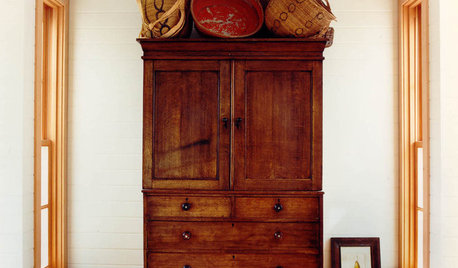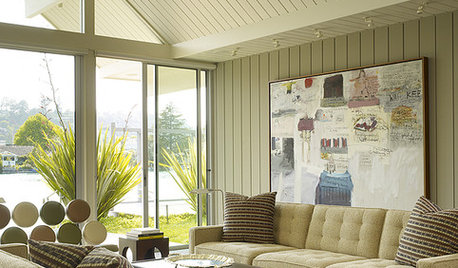A beginner with TONS of questions
Frizzle
14 years ago
Related Stories

DECORATING GUIDESA Beginner's Mini Guide to Buying Antiques
Experience the thrill of the hunt without ignorance ruining the spoils, with this guide to antiquing for novice buyers
Full Story
WORKING WITH PROSA Beginner’s Guide to Managing a Remodel
How do you make your design dream a reality? Here’s some project management know-how to help you work with your designer
Full Story
ARTCollect With Confidence: An Art-Buying Guide for Beginners
Don't let a lack of knowledge or limited funds keep you from the joy of owning art. This guide will put you on the collector's path
Full Story
KITCHEN DESIGN9 Questions to Ask When Planning a Kitchen Pantry
Avoid blunders and get the storage space and layout you need by asking these questions before you begin
Full Story
REMODELING GUIDES13 Essential Questions to Ask Yourself Before Tackling a Renovation
No one knows you better than yourself, so to get the remodel you truly want, consider these questions first
Full Story
REMODELING GUIDESSurvive Your Home Remodel: 11 Must-Ask Questions
Plan ahead to keep minor hassles from turning into major headaches during an extensive renovation
Full Story
DOORS5 Questions to Ask Before Installing a Barn Door
Find out whether that barn door you love is the right solution for your space
Full Story
WORKING WITH PROS12 Questions Your Interior Designer Should Ask You
The best decorators aren’t dictators — and they’re not mind readers either. To understand your tastes, they need this essential info
Full Story
ORGANIZINGPre-Storage Checklist: 10 Questions to Ask Yourself Before You Store
Wait, stop. Do you really need to keep that item you’re about to put into storage?
Full Story
GREEN DECORATING8 Questions to Help You See Through Green Hype
With the ecofriendly bandwagon picking up some dubious passengers, here's how to tell truly green products and services from the imposters
Full StorySponsored






smickerdoodle
Calamity_J
Related Professionals
Napa Glass & Shower Door Dealers · Redwood City Glass & Shower Door Dealers · Spring Glass & Shower Door Dealers · Ponte Vedra Glass & Shower Door Dealers · Montgomery Village Window Contractors · Winnetka Window Contractors · Linthicum Window Contractors · Corona Custom Closet Designers · West Hollywood Custom Closet Designers · Dayton Window Contractors · Muncie Window Contractors · North Hollywood Window Contractors · Seattle Window Contractors · Portage Window Contractors · Elkridge Window ContractorsFrizzleOriginal Author
Calamity_J
FrizzleOriginal Author
Calamity_J
FrizzleOriginal Author
Calamity_J
chinatreasures
FrizzleOriginal Author
chinatreasures
FrizzleOriginal Author
chinatreasures
FrizzleOriginal Author